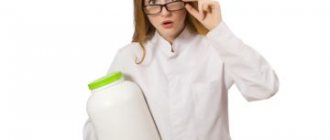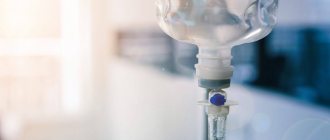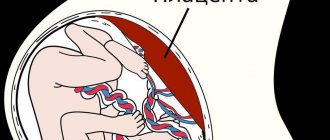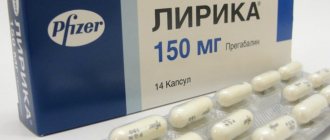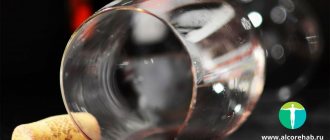- General information
- Effect on the body
- How to recognize a drug addict
- Testing for ephedrine
- How long does it stay in the body?
- How long does it stay in urine?
- How long does it stay in the blood?
- How long does it stay in saliva?
- How long does it stay in hair?
- How long do drug addicts live?
- Analogs
- How to speed up drug withdrawal at home
- Detoxification in hospital
- Overdose
- Overdose symptoms
- What to do
- Rehabilitation
- Coding
- Outpatient rehabilitation
- Working with codependents and resocialization
- How to quit on your own
Attention!
Drug use causes irreparable harm to health and poses a danger to life!
General information
There are two types of ephedrine: artificial and natural. Natural is an alkaloid of the ephedra plant. Artificial has been synthesized chemically since the last century. The process of synthesizing ephedrine itself is complex, and therefore it is rarely produced in artisanal conditions.
Until the 2000s, ephedrine was actively sold as a cough and allergy medicine, and it was also contained in weight loss products and energy drinks. These drugs were used to make drugs at home. In Russia, “mulka” and “vint” were prepared with ephedrine. Both drugs led to death, impaired intellectual abilities, and paralysis. These drugs always contained impurities of potassium permanganate and red phosphorus, which had an additional toxic effect on the body.
Nowadays, the use of ephedrine in medicines is greatly limited, and its effectiveness has been reconsidered. The only group of drugs where it is used in Russia are drugs to combat allergic swelling of the nasal mucosa.
In the USA, ephedrine is sold without a prescription, but only upon presentation of an identification document. One person can buy medications for a month in which the amount of ephedrine does not exceed 9 grams.
The drug will not cause addiction and will not affect internal organs if used in medicinal dosages. But if you use drugs that are prepared on the basis of ephedrine, this will lead to rapid psychological and physical dependence.
Nowadays, ephedrine is used less frequently, since many analogs have appeared that are much easier to manufacture and do not require complex synthesis or additional chemical reagents.
Ephedra and ephedrine in pharmacology
The herb ephedra has long been used in medicine. This medicinal plant is used to treat asthma, hypotension, and pharyngitis. The use of ephedra berries was widespread in China and Japan, and the plant was popular due to its medicinal properties. It stimulates the respiratory center, excites the central nervous system, and increases blood pressure. The extract and fruits of ephedra are used in folk medicine to eliminate inflammation after surgery, intoxication, large blood loss, and injuries.
Effect on the body
The duration of action of ephedrine-based drugs is from 1.5 to 24 hours. The mechanism of action is that the drug stimulates alpha and beta adrenergic receptors, which are found in all organs and tissues. Depending on the route of administration and dose of the drug, various symptoms appear, including depression of the nervous system in case of overdose.
First of all, the effect of the drug extends to neuronal synapses in the brain, myocardium and bronchi. These places contain the largest number of adrenergic receptors. If the dose of ephedrine is high and the substance is used for recreational purposes, it will lead to symptoms such as:
- increased blood pressure;
- the appearance of tachycardia or other arrhythmias;
- the appearance of obsessive ideas;
- acceleration and confusion of thoughts;
- lack of coordination;
- acceleration of speech;
- dilation of the bronchi;
- increase in minute volume of the heart and lungs;
- acceleration of glomerular filtration in the kidneys;
- the appearance of increased sweating;
- the appearance of thirst and dry mouth;
- the appearance of trembling in the hands;
- sleep disturbance;
- decreased appetite.
These are only some of the effects that occur after using ephedrine-based drugs. Disorders such as liver cirrhosis or fatty liver disease, kidney failure, brain edema, degradation of neural connections, dementia and other diseases also arise because drugs always contain additional chemicals. Most often, red phosphorus is used as an impurity when talking about metaphmetamine (pervitin) or potassium permanganate (when a drug addict prepares “mulka”).
Due to sleep disturbances and suppressed appetite against the background of high blood pressure, water and electrolyte imbalances occur. Due to the acceleration of metabolism under the influence of ephedrine, the pH of the blood shifts to a more acidic side. Fewer water-soluble particles appear in the urine and many minerals (sodium, potassium, phosphorus, calcium) are released through the kidneys. Usually a deficiency of one or two ions prevails, but this can be critical for the body.
With chronic drug abuse, body tissues are depleted, the interaction of ion transport and impulse transmission through brain synapses is disrupted, the quality of life and intellectual abilities are reduced. Ultimately, like any other stimulant, ephedrine-based drugs cause death due to heart failure, stroke or heart attack. Mostly people of working age under 35 die.
Due to the large release of neurotransmitters, delusions of grandeur arise. A person thinks that he can do something better than others. At first glance, this seems to be a “good effect,” but behind this there is severe depletion of the nervous system. Neural connections that have been created in the brain for months and years are destroyed. Memory lapses may occur, and after the drug wears off, all mental abilities decline sharply. Against the background of constant depletion of mediators, rapid fatigue occurs, the inability to perform complex actions, and think logically. And half of people, after the end of drug intoxication, experience severe depression, which is difficult to treat with medication.
Application in medicine
To provide medical care, a sympathomimetic effect is used - increasing the release of adrenaline and norepinephrine. This property allows the remedy to be used for a number of painful conditions.
As part of various drugs, the alkaloid causes:
- Narrowing of the arteries, which has a therapeutic effect when blood pressure drops - hypotension, fainting, collapse. This effect helps to remove swelling due to allergic processes and relieve the symptoms of urticaria.
- Relaxation of the muscular wall of the bronchi. This medicinal phenomenon allows you to relieve an attack of bronchial asthma.
- Improvement in heart failure due to increased blood circulation.
- Increased heart rate.
- Activation of cardiac conduction.
- Increasing the possibility of tonic contractions of striated muscles.
- Increased blood glucose levels.
- Pupil dilation. In this case, intraocular pressure does not change, and visual functions remain at the original level.
- Stimulation of the central nervous system.
- Reduction of body weight (with long-term use).
The legislation of the Russian Federation prohibits the sale of ephedrine to drug addicts and other people without prescriptions, as well as the storage and official use of drugs in which the content of a narcotic substance exceeds 10%.
How to recognize a drug addict
All drug addicts try to hide their addiction. They deny the fact of use until the very end. A person can be convicted of what he is using only after testing. Finding out what specific drug a person is abusing is even more difficult.
Ephedrine addicts often have combined drug addiction. They use any psychostimulants with a similar effect. In such situations, the main thing is to suspect addiction, and determining what causes it is the priority task of narcologists or other specialists in the field of drug addiction treatment.
Relatives of an addicted person should always “catch” the mood swings and behavior of the addict. The fact is that every addict is always in two stages:
- drug effect;
- withdrawal syndrome.
These situations are the opposite. Under the influence of the drug, the patient talks a lot and quickly, shows frivolity, can smoke a lot, tell crazy ideas, sweats profusely, drinks a lot of liquids. Usually his pupils are constricted and his eyes are red. If a person uses the substance intranasally, then for the first hour or two he will constantly sniffle. This is a characteristic sign that inexperienced people rarely pay attention to. To prevent dry mouth, an addicted person often chews gum. Under the influence of the drug, he does not want to eat or sleep, and usually has the urge to perform some kind of activity. A drug addict may walk all night or simply clean the room, even if this was not necessary.
At a drug addict’s home, you can always find sachets of unknown powder, syringes, pharmaceutical cough medicines, or drugs to dilate the bronchi.
In a state of withdrawal, the patient can either be aggressive, or, on the contrary, lie in bed and do nothing: do not eat, do not drink. Later, the addict has a desire to use again and for this he needs money. To get them, addicts rarely go to work; more often they simply steal houses from relatives, take out gold chains, household appliances, and furniture.
Always pay attention to the social life of your loved ones. If problems start at school or work, a person communicates with suspicious people, brings them home, then perhaps they use together.
During the abstinence period, disturbances in the functioning of the heart, lungs, and nervous system often appear. Vomiting and convulsions appear. If there is a tendency to develop organ dysfunction, this indicates physical dependence. To treat it, it is better to seek help from a rehabilitation and addiction treatment center.
Detoxification
3 000 ₽
Calling a narcologist to your home
3 000 ₽
Literature:
- Pharmacology of drugs that stimulate the adrenergic nervous system / I. A. Vinogradova, T. A. Lotosh, V. D. Yunash, etc.; Ministry of Education and Science of the Russian Federation, Federal State Budgetary Educational Institution of Higher Education "Petrozavodsk State University". - Petrozavodsk: PetrSU Publishing House, 2021. - 54 p.
- General and private narcology / I. N. Pyatnitskaya. - Moscow: Medicine, 2008. - 637 p.
- Causes and consequences of bad habits: textbook / L. G. Ovcharova, L. S. Khoroshilova, Z. A. Kurbatova; Ministry of Education and Science of the Russian Federation, State. higher educational institution prof. education "Kemerovo State. univ." - Kemerovo: Kuzbassvuzizdat, 2006. - 115 p.
The text was checked by expert doctors: Head of the socio-psychological service of the Alkoklinik MC, psychologist Yu.P. Baranova, L.A. Serova, a psychiatrist-narcologist.
CAN'T FIND THE ANSWER?
Consult a specialist
Or call: +7 (495) 798-30-80
Call! We work around the clock!
Testing for ephedrine
Testing can be rapid (rapid tests) or laboratory - slower. The accuracy of determination in both cases is 99% or higher. But express methods allow you to determine only the fact of drug use, while laboratory methods allow you to find out the amount of the substance, the approximate date of last use and the specific drug that the patient used.
Rapid testing is based on a technique for determining drug metabolites using antibodies. This method is called enzyme immunoassay. It is accurate and easy to use. Typically, urine or saliva is collected for testing. Express tests are available for purchase in pharmacies, on Internet sites, and they are available in hospitals and drug treatment clinics. Sellers offer not only specific tests for ephedrine, but also test tablets that determine the use of several drugs at once. Such test plates allow you to determine the presence or absence of 3-5-10 drugs.
In cases of ephedrine addiction, express methods are a good testing option, since such people usually suffer from polydrug addiction. The price of an express test starts from 100 and goes up to 500 rubles. It all depends on the brand of the product and its quality. Most products are effective and can be used at home or in a hospital. It must be borne in mind that the results of such a test have no legal force and cannot be used in court as evidence of use.
Laboratory methods are more accurate and determine the approximate amount and time of drug use. Biological raw materials for testing can be blood, urine, saliva, hair and nails. The last 2 options are used less frequently, since testing them for the presence of ephedrine is difficult and very expensive.
In laboratory conditions, gas-liquid chromatography and gas chromatography-mass spectrometry are used. All results obtained through laboratory testing can be used in court as evidence of the patient's drug use.
Test companies that can be used:
- Delta M;
- Nanoscreen;
- Immunochrome;
- Sniper.
Brief description of performing a drug test at home:
- It is necessary that the patient fills a clean container with his urine.
- If the liquid is cold, it is not the patient’s urine, since “fresh” urine always has a temperature of 35-37 degrees. For testing, the biological fluid cannot be colder than 20 and hotter than 40 degrees.
- Dip the test strip into the liquid and wait 20-40 seconds (on average, the reaction begins in 30 seconds).
- After about 10 minutes, record the test result.
- To correctly interpret the result, read the instructions. There is always 1 strip that indicates whether there are drug metabolites, and another strip that shows whether the test is working. But each company always makes an additional note so that the people conducting the testing understand and correctly interpret the result.
If no changes occur with the strip at all, this is a bad test.
Drug addiction treatment
A large number of drugs are used in therapy. This is explained by the complex toxic effect of ephedrine on the human body. The following medications are often included in the program:
- Neuroleptic drugs
- pericyazine 0.01-0.04 g/day;
- pipothiazine (piportil) 10-40 mg orally or intramuscularly;
- Zuclopenthixol 0.025-0.15 g/day.
- Antidepressants. More often - imipramine (melipramine) 100-200 mg orally or intramuscularly.
- Anticonvulsants. For example, carbamazepine (finlepsin) 400-600 mg orally.
- Antienzymes - aprotinin (contrical) 10,000-20,000 ATRE IV drip.
- A-blockers - proroxan (pyrroxan) 90-135 mg orally, subcutaneously or intramuscularly.
- Nootropic drugs - aminophenylbutyric acid (phenibut) 60-150 mg orally.
- B vitamins.
- Hepatoprotectors.
Drug therapy complements forced diuresis and plasmapheresis, which is carried out as part of detoxification. It is carried out simultaneously with psychotherapy.
How addiction is formed
Dependence on ephedrine develops quickly - a few injections in non-therapeutic dosages are enough. The following stages are distinguished in its development:
- Trial use. People who use ephedrine for treatment are often at this stage. An accidental overdose gives a new sensation, which pushes for new use in non-therapeutic doses.
- Psychological dependence. Unlike amphetamine euphoria, dependence on ephedrine already at this stage has external manifestations. The person becomes very active and easily copes with tasks. To maintain working capacity, an increasingly larger dose is required.
- Uncontrolled use. By this stage, a person’s behavior becomes uncontrollable and aggressive. Social connections are severed.
How long do drug addicts live?
In therapeutic dosages, ephedrine is not capable of causing death. If the pharmaceutical version is used as a narcotic drug, the estimated life expectancy of the addict is from 8 to 15 years.
Ephedrine in concentrations greater than 10% is under strict government control. Therefore, drug addicts get it from drugs that are easier to obtain. Chemical treatment causes the addict to die after 5–7 years. Life expectancy is affected by the severity of diseases that develop as a result of drug use.
A depleted nervous system is difficult to treat, which is a favorable environment for the development of suicidal thoughts.
Rehabilitation
This phase of treatment is a continuation of detoxification and medication. It involves working with a psychologist - both group and individual. At meetings, addicts are taught to see the reasons that led to the development of the disease, to express their thoughts, feelings, and experiences. They are offered scenarios for life without the use of dangerous substances. Successful rehabilitation is possible not only if the specialist has drawn up a competent program. There must also be a desire of the drug addict himself to change his life.
Why you can’t treat yourself at home
Depending on ephedrine, the greatest danger to vital functions is withdrawal symptoms. The toxic effect of the substance on the central nervous system and cardiovascular system cannot be eliminated at home.
Maintaining contact with an environment in which drugs are common does not promote recovery. Without psychotherapy, it is difficult for a drug addict to cope with the temptation to take a new dose.
Working with codependents
In narcology, codependents include the immediate environment with whom the drug addict lives. These are parents, adult children, husband/wife. Living together with a patient, they cease to perceive addiction as a disease.
To achieve sustainable remission, family members are taught models of behavior with drug addicts. In particular, it explains how to avoid conflicts that can cause a return to an addiction.
Also, during meetings with a psychologist, family members are provided with all the information about ephedrine addiction. Attention is paid to the reasons for its development and consequences.
Ambulatory treatment
A direction in the treatment of drug addiction that has emerged relatively recently. Recommended only for those patients who have not developed psychological and physiological dependence.
Outpatient treatment involves the development of an individual program for each drug addict. It involves working both at home and in a hospital setting. A course of vitamins is prescribed to restore the immune system, and individual meetings with a psychologist. Group classes within the 12-step program are required. Contact with those who have already achieved stable remission also has a positive effect.
Resocialization
The final stage of treatment. The person should not show signs of emotional instability. There can be two types:
- Group. Those recovering live in groups outside the clinic. This allows you to learn how to build social connections and contacts. Retraining courses are often organized. Both group and individual classes are offered at the rehabilitation center.
- Home resocialization. Such therapy is possible if family members are ready to help the former drug addict and do not use potentially dangerous substances themselves. It is recommended to attend courses and webinars that will teach conflict resolution techniques.
How long does it stay in the body?
The metabolism of ephedrine consists of its breakdown in the liver and excretion through the kidneys. But this process has individual characteristics. The rate of elimination of ephedrine from the blood or urine is from 3 to 10 days. The rate of elimination is affected by a person’s weight, age, frequency of drug use, and the functional characteristics of the liver and kidneys. Even the food the patient eats affects the rate at which the drug is eliminated.
The younger a person is, the faster his metabolism is and the faster the drug is eliminated. But at the same time, the more other drugs, alcohol and nicotine enter the body, the slower ephedrine is metabolized.
How long does it stay in urine?
Without additional load in the form of alcohol and other drugs, ephedrine is excreted by the kidneys in 5-7 days. For chronic abuse, after 7-10 days.
How long does it stay in the blood?
On average, the time it takes to remove ephedrine from the blood is about 12 hours. Information varies from source to source. There is evidence that ephedrine is cleared from the blood up to 3 days.
After 10-14 days, specific antibodies to ephedrine can be detected in the blood. They can circulate in the bloodstream for several months and even several years.
How long does it stay in saliva?
From 3 to 9 hours. It all depends on the dose of the drug, the functionality of the body and the duration of abuse.
How long does it stay in hair?
Most sources say that ephedrine does not accumulate in the hair, but is completely eliminated through the kidneys. Therefore, hair is rarely used to test a person for ephedrine addiction. Additionally, hair testing is one of the most expensive and time-consuming drug tests.
Contraindications
Ephedrine is not prescribed for insomnia, intolerance to the main component, pheochromocytoma , HOCM, tachycardia, uncontrolled arterial hypertension, and ventricular fibridation.
For hypoxia, hypercapnia, metabolic acidosis , hypovolemia, pulmonary hypertension, angle-closure glaucoma, atrial fibrillation, Buerger's disease, atherosclerosis, arterial embolism, occlusive vascular lesions in the patient's history, myocardial infarction, Raynaud's disease , diabetic endarteritis, frostbite, thyrotoxicosis, diabetes diabetes, benign prostatic hyperplasia, ventricular arrhythmia, tachyarrhythmia, angina pectoris, arterial hypertension, coronary insufficiency and other diseases of the cardiovascular system Ephedrine is prescribed with caution.
How long do drug addicts live?
It is difficult to say how long a person addicted to ephedrine will live. The fact that life will be of poor quality and will not end for natural reasons is accurate information. There are no studies on life expectancy, and some people who use ephedrine-based drugs hide this. In addition, these people usually use other drugs.
According to statistics, active drug addicts who use psychostimulants (ephedrine is a psychostimulant) live 8-10 years. But this is conditional, since death can occur even after the first use. For example, in people with a weak heart or due to taking a large dose.
The main cause of death for people under 35 who abuse psychostimulants is myocardial infarction or stroke. This is due to the fact that under the influence of ephedrine, blood pressure increases and the force of cardiac output increases.
Sometimes, due to abuse, disturbances in liver function appear and cirrhosis develops. Due to impaired immunity, cancer, pneumonia, pyelonephritis, and kidney failure are often detected.
Indications for use
Ephedrine is prescribed for hay fever, catarrhal rhinitis, sinusitis, vasomotor rhinitis, and arterial hypotension (spinal anesthesia, surgery, shock, collapse, overdose of antihypertensive medications, adrenergic blockers, ganglion-blocking drugs, bacteremia, blood loss, trauma).
The drug is prescribed for depression, narcolepsy, bronchial asthma, poisoning with sleeping pills, serum sickness , urticaria, bleeding from the pulp of teeth and gums, drug poisoning, for diagnostic purposes in ophthalmic practice (pupil dilation).
Analogs
If we consider ephedrine as a plant alkaloid with biological origin, then cocaine is closest in terms of effects on the body and methods of extraction. The drug has a similar mechanism of action and is also an alkaloid.
If we consider drugs that contain ephedrine, then first of all we need to take into account all the drugs that are used against cough, and their active ingredient is ephedrine or pseudoephedrine. Such drugs include:
- Bronholitin;
- Insanovin;
- Theophedrine;
- Bronchitusen;
If we talk about drugs that act in the same way as ephedrine, then these are all drugs that are psychostimulants:
- Cocaine;
- Amphetamine;
- Alpha PVP;
- Siberia;
- Crack;
- Dexamphetamine.
All narcotic analogues cause rapid addiction and lead to death in a relatively quick period of time.
All types of drug addiction
Drug addiction treatment
More details
Female, age, beer
Treatment of alcoholism
More details
Medicines containing ephedrine
In pharmacies you can find drugs containing ephedra, which are most often presented as cough suppressants and syrups used to treat the respiratory tract. Among them:
- Bronholitin;
- Bronchoton;
- Bronchitusen;
- Bronchosevt;
- Bronchocin.
The list of ephedrine drugs is quite wide. Ephedrine in tablets or drops is no less common. The following popular drugs can be distinguished:
- Neo-Theophedrine;
- Teofedrine-N;
- Solutan;
- Insanovin;
- ephedrine hydrochloride;
- ephedrine sulfate.
How to speed up drug withdrawal at home
What you can do at home:
- Drink plenty of fluids. But not just water, but alkaline water. Due to the effect of the drug, many microelements are lost. If you drink plain water, edema may appear, the minute volume of blood increases, which will further strain the heart. And acceleration of metabolism leads to a decrease in acidity. Therefore, alkaline water is the best choice. You can drink fruit juice, compote, sweet tea. All these products enhance the excretion of metabolites through the kidneys. The amount of liquid per day should not exceed 5 liters.
- Perform minimal physical activity. It is recommended to walk, swim, do exercises, and do yoga. Movement and physical activity speed up the elimination of the drug and relieve the load on the heart.
- Limit consumption of alcohol, nicotine, fatty and spicy foods, coffee.
These actions must be performed provided that there are no disturbances in cardiac activity or signs of disruption of the nervous system. Otherwise, it is better to be treated in a hospital or drug treatment clinic.
Keep in mind that going to the sauna theoretically increases sweating and thereby removes drug metabolites from the blood. But high air temperature leads to irritation of the bronchi and lungs, disrupts the balance between intracellular and extracellular fluid and increases the load on the heart. Therefore, it is better to postpone going to the sauna or bath until the body is completely cleansed. It is better to drink hot drinks (but not coffee) and thereby increase sweating.
Effect of ephedrine
The effect on the body of the substance is close to adrenaline, that is:
- Dilates the bronchi and pupils.
- At the same time, it sharply constricts blood vessels.
- Changes heart rate.
- Provokes increases in blood pressure.
- Reduces intestinal peristalsis until it stops.
- Increases temperature.
Drug addicts choose ephedrine, which has a similar effect to powerful psychostimulants.
It begins with the rise of a relaxing wave. With a surge of energy and endurance comes confidence in one’s own abilities and talents, a complacent mood and unstoppable eloquence. Hallucinations with the effect of separation from the body are possible. Addiction occurs after 3-6 weeks of action of the substance. How to recognize an ephedrine addict? In addition to general exhaustion and an unhealthy shine in the eyes with dark dilated pupils in substance addicts:
- Pale gray complexion.
- Teeth covered with white plaque.
- Red tongue with white edges.
- Islands of hyperpigmentation in areas of skin damage.
- Dry mucous membranes.
- When administered intravenously, signs of ephedrine use are expressed as purple-pink tracks along the veins.
Call 8 (495) 150-85-96
Detoxification in hospital
Cases have been described where, due to withdrawal symptoms after consuming ephedrine and its analogues, heart rhythm disturbances occur and an imbalance develops between the sympathetic and parasympathetic nervous systems.
Such changes require a careful approach and the appointment of adequate symptomatic and supportive treatment. The fact is that there is no antidote to ephedrine. The only thing that remains for the doctor is to maintain homeostasis of the body, infusion therapy and hardware cleaning methods.
Regarding hardware purification methods: if the drug binds to blood plasma proteins, they are not purified by plasmapheresis or hemosorption. But such methods greatly cleanse the blood of toxins and, thereby, reduce the load on the kidneys and liver.
At the same time, blood parameters are measured in the hospital and, if necessary, they are adjusted. Hepatoprotectors and antioxidants may be prescribed.
One of the simple but effective methods of cleaning in a hospital is forced diuresis. The patient is filled with 5% glucose, colloidal solutions, saline through a dropper, and then diuretics are prescribed against this background. This leads to faster filtration in the kidneys. And the correct selection of infusion allows you to save all the necessary microelements without causing damage to internal organs.
Negative consequences of abuse
An advanced form of drug addiction leads to a number of complications. The patient's nervous system, internal organs, and psyche are affected.
As a result of untreated drug addiction, the patient develops:
- Persistent depression.
- Impaired blood circulation in the brain, both transient and leading to ischemic strokes, and in case of vascular damage - to hemorrhagic ones.
- IHD, manifested by angina pectoris and myocardial infarction.
- Polyneuropathy, which makes itself felt by deterioration of the innervation of the extremities, blue discoloration of the hands and feet, and convulsive manifestations.
Serious complications for life are: cerebral edema, cardiac and respiratory arrest.
Overdose
An overdose occurs due to the use of large doses or high frequency of use (when a person uses every few hours). Sometimes ephedrine addicts end up in a “marathon” - continuous use of ephedrine and its analogues for several days. Moreover, at this time people do not sleep and practically do not eat.
One common cause of overdose is combining ephedrine with other drugs or alcohol.
At the physiological level, overdose occurs due to the development of tolerance in the receptors responsible for the release of dopamine and norepinephrine. When a drug enters the bloodstream, it binds to synapses and stimulates adrenergic receptors through mediators. With each new use, the body produces special enzymes to destroy the drug faster. This leads to the fact that drug addicts, trying to get the effect, increase the dose. This behavior lasts as long as the body copes with the received dose of ephedrine. As soon as the amount of the drug exceeds the functional capabilities of the body, an overdose occurs.
Overdose symptoms
What a drug addict faces during an overdose:
- disturbance or loss of consciousness;
- tremors or seizures;
- incoherent speech, aggressive behavior (may start a fight with strangers, scream, threaten violence, etc.);
- constriction of the pupils;
- frequent vomiting;
- cold sweat;
- the appearance of pallor (in severe cases of cyanosis) of the skin;
- blood pressure surges;
- increase in heart rate above 120 in 1 minute;
- the appearance of shortness of breath;
The severity of symptoms is purely individual. But always remember that an overdose of ephedrine can cause loss of consciousness, breathing problems, acute heart failure and death.
What to do
There are not many actions in your arsenal that could help the patient. Therefore, first of all, call an ambulance. Be sure to ensure that you are not in any danger while providing care to the patient.
Move the patient to a place that is comfortable for him. Take it from an area where cars may be driving or people walking. If the patient is cold, cover him and keep his extremities warm (especially in winter). If the patient is conscious, let's drink hot tea, or even plain water.
If the patient is hot, remove outer clothing, open the window and provide fresh air.
If convulsions occur, do not try to hold the person or clamp their tongue with hard objects. The only thing that is important is to provide the patient with conditions so that during convulsions he does not break his head.
While the ambulance is driving, monitor your pulse and breathing. If there is no pulse or breathing, do not wait, but start performing chest compressions. This is done by pressing the chest frequently 2 times in 1 second. Every 30 presses, breathe mouth to mouth, first covering your nose with your hands so that the air enters the respiratory tract and does not come out through the nose.
Upon arrival, the ambulance will provide symptomatic support and, if necessary, continue to perform chest compressions.
Instructions for use of Ephedrine (Method and dosage)
The drug is taken orally, administered intravenously, subcutaneously, intramuscularly.
For allergic diseases, bronchial asthma, the drug is taken orally for 10-15 days, 2-3 times a day, 25-50 mg, or in cycles of three days with three-day breaks.
As a central nervous system stimulant and bronchodilator, the drug is prescribed to children subcutaneously or intravenously at 3 mg/kg (4-6 doses).
Before spinal anesthesia, in case of bacteremia, 20-50 mg is administered intramuscularly and subcutaneously 2-3 times a day.
Higher dosages for subcutaneous administration and oral administration: daily – 150 mg, single – 50 mg.
For arterial hypotension, Ephedrine is administered intravenously in a slow stream, subcutaneously at 20-50 mg in saline solution. Repeated administration is carried out under the control of blood pressure levels.
For vasomotor rhinitis, a 2-3% solution is used; in ophthalmic practice, a 1-5% solution is prescribed.
As a vasoconstrictor, 750 mcg/kg is administered intravenously or subcutaneously to children under monitoring the patient's response.
Rehabilitation
Rehabilitation of those addicted to ephedrine and its analogues is very long. If the patient does not use for a long time, he only develops psychological dependence. With active use for more than six months (it’s different for everyone), physical dependence may occur. The difference is that in the first case, a person has only the mental component of addiction; he wants to get drug intoxicated again. In the second case, a person without a dose simply cannot function. If he does not take a new dose, his organs and systems simply fail. Moreover, there is no clear gradation of time: when psychological dependence turns into physical dependence.
Rehabilitation is not coding, locking the patient in a room or isolating him from society. Proper rehabilitation is mental work with the patient, his psychological programming, his return to social activity, life, assistance in changing patterns of behavior and thinking. Only an integrated approach in combination of psychological methods with the necessary pharmacological support provides lasting results and remission.
The main methods of treatment are treatment of abstinence, assistance in overcoming drug cravings, working with codependents and resocialization of the patient.
Most people cannot quit on their own and constantly need psychological help in a group or individually. Those who can quit on their own quickly relapse without supportive therapy.
special instructions
When performing an infusion, it is necessary to use a special device equipped with a measuring scale to regulate the rate of infusion. It is advisable to carry out infusions into large veins, preferably into the central one.
During therapy, monitoring of changes in ECG, urine volume, blood pressure, pulmonary capillary wedge pressure, pulmonary artery pressure, and central venous pressure .
To prevent sleep disturbances at night, Ephedrine is prescribed before bedtime or at the end of the day.
It is necessary to ensure that the drug does not enter the area of perivascular tissue, which causes the formation of necrosis.
Excessive amounts of the drug during myocardial infarction can cause increased and progressive ischemia due to an increased need for oxygen in myocardial tissue.
Before therapy, hypovolemia is corrected.
The administration of ephedrine is not a replacement for saline solutions, blood substitute fluids, plasma, or blood.
Long-term treatment with ephedrine is unacceptable.
During spinal anesthesia, the drug may cause increased heart rate in the fetus.
The medication can cause persistent arterial hypertension when combined with drugs that enhance labor, or when local anesthetics are added during delivery.
It is unacceptable to use an opaque solution.
The remaining solution after infusion is destroyed.
Previously, ephedrine was taken orally for the treatment of myasthenia gravis and enuresis.
When taking monoamine oxidase inhibitors together, there is an increase in the pressor effect of sympathomimetics, which causes vomiting, headaches, arrhythmia, and increases the risk of hypertensive crisis .
There are many ways to synthesize this alkaloid.
The medicine is described in Wikipedia. There is also a corresponding pharmacopoeial monograph.
The combination of ephedrine + caffeine + aspirin is used in bodybuilding and fitness for “drying”. However, we do not recommend using it as it may be dangerous to your health.
Outpatient rehabilitation
This type of rehabilitation is practiced in the USA. But it is effective only when the patient has already completed the basic stages of treatment, goes to group trainings and changes his social life. In other cases, this method will not be effective.
At home, without a mental attitude, it is very difficult to convince a person not to use it one more time. It is difficult to get an addict to take action, go to work or attend classes. If possible, it is better to start therapy in a hospital or specialized addiction treatment clinic. The right approach and prescriptions allow us to achieve recovery and remission from drug addiction.
Danger of consumption methods
Ephedrine is taken intravenously or orally. The dangers of the first method include:
- Among drug addicts, several people often use one syringe at once. Because of this, the risk of contracting various infections that are transmitted through the blood-to-blood line increases. For example, hepatitis C, HIV/AIDS. In medicine, such an exchange is called needle exchange.
- Addicted people practically do not observe the rules of personal hygiene. Dirt remaining on the surface of the skin easily gets into the wound after an injection.
- Disposable syringes are not suitable for repeated use. Drug addicts ignore this rule, which leads to trauma to the walls of blood vessels. In response to this, scar tissue is produced. “Tracks” on the skin are a sure sign of a drug addict.
- Due to confusion, it is difficult to immediately get into a vein. Injuries lead to the formation of arterial pseudoaneurysms.
The oral route increases the side effects of pharmaceutical forms of ephedrine:
- heartburn;
- dryness and irritation of the pharynx and oral cavity;
- attacks of nausea and vomiting.
Working with codependents and resocialization
All relatives and friends of the patient who were influenced by the patient’s addiction should undergo psychological training and work to prevent conflict situations. This will increase the strength of remission and eliminate the possibility of spontaneous relapse.
If a patient comes to a home where they do not judge him, but try to help and support him in the fight against addiction, then such a “microclimate” is much more favorable for further treatment and relapse prevention. In such conditions, you can try outpatient treatment and begin active resocialization of the patient.
Resocialization is to return the patient to his social significance, give him the opportunity to look at his life in a new way, help him find himself and occupy him with any activity that would distract him from addiction. Such activities often include work, any hobbies, deepening in faith or volunteering.
Replacement of ephedrine[edit | edit code]
As you know, ephedrine is prohibited for free distribution and sale in Russia (with the exception of drugs with certificates and licenses). The drug containing ephedrine, broncholithin, contains quite a lot of sugar and has a bad taste, causing nausea and other unpleasant effects in some people. The most suitable alternative in terms of properties is DMAA
.
There are other substitutes for ephedrine - thyroxine
, the main thyroid hormone. Other alkaloids, such as caffeine, yohimbine, synephrine, and the levorotatory isomer of amphetamine (L-amphetamine)
How to quit on your own
Although physical dependence on ephedrine does not cause withdrawal symptoms like heroin addiction, without a new dose problems with organs develop, depression and even suicidal thoughts appear. That is why you should always approach attempts to tie yourself with caution.
If the patient decides to quit, this should be done immediately. You immediately need to tell yourself “no” and be prepared for the fact that a thousand reasons will appear in your head why you can use it again. You should always stop socializing and hanging out with people who are active drug addicts. They are the ones who provoke the onset of use and become triggers for relapses. It is important to be prepared for withdrawal. You need to stock up on food, water, and medicine. This is done so that you can sit at home for some time, not go out to the store and not provoke yourself into buying a new dose.
Plants containing ephedrine
What other plants contain ephedrine? A large concentration of it is found in plants and shrubs of the ephedra genus, but out of more than 40 species, the alkaloid is contained only in 18. The maximum concentration of the active substance is found in young shoots. The most common types of ephedra are: ephedra horsetail, two-spikelet, single-seeded, and Dahurian ephedra.
Ephedra is a psychostimulant. The psychoactive substance ephedrine (ephedrinum) was synthesized from the plant in 1929, which began to be actively used in medicine for the treatment of bronchial asthma.
Pharmacological group of ephedrine: sympathomimetic agent.
Chemical formula of ephedrine: C10H15NO.
Release form: tablets, powder, ampoules with solution, as well as sprays, syrups and ointments.
What does ephedrine look like?



